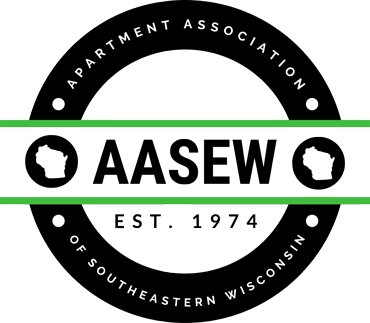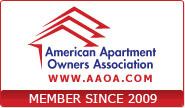Tristan is the Executive Vice President and shareholder with the law firm of Petrie+Pettit and focuses his practice in the area of landlord-tenant law representing landlords and property management companies throughout Wisconsin.
Call us: (414) 276-2850
CARES Act Eviction Restrictions Apply to More Landlords Than You Think
Posted by Tristan R. Pettit, Esq. in COVID-19 / Comments
The following is a guest post written by Atty. Jennifer Hayden of Petrie + Pettit S.C.
We’ve previously discussed the impact of the recent extension of the Stay at Home Order by Governor Evers. However, under Section 4024 of the CARES Act, Landlords who have residential tenants in a “covered dwelling” that participates in a “covered housing program” (as defined in section 41411(a) of the Violence Against Women Act of 1994 or the rural housing voucher program under section 542 of the Housing Act of 1949 or has a “Federally backed mortgage loan” or a “Federally backed multifamily mortgage loan”, have additional prohibitions on what they may or may not do with regard to terminating a tenancy and filing an eviction against their tenant until July 25, 2020 (120 days after the enactment date of March 27, 2020).
Just a warning, this post is a little dry and technical but the law is dry and technical so there is not a lot to work with. ; ). Try not to fall asleep as this is important.
What is the eviction moratorium under the CARES Act?
It consists of two key provisions which contain two sub provisions.
The first provisions is
- Through July 25, 2020, a landlord of a “covered dwelling” may NOT do any of the following:
(a) make, or cause to be made, any filing with the court of jurisdiction to initiate a legal action to recover possession of the covered dwelling from the tenant for nonpayment of rent or other fees or charges; or
Translation: You can’t file an eviction based on non-payment of rent or other amounts owed to you by the tenant.
(b) charge fees, penalties, or other charges to the tenant related to such nonpayment of rent.
Translation: You can’t charge a late fee if your tenant doesn't pay rent.
The second provision is
2. Additionally, a landlord of a “covered dwelling” also may not:
(a) require the tenant to vacate the covered dwelling unit before the date that is 30 days after the date on which the lessor provides the tenant with a notice to vacate; or
Translation: You must give a tenant at least a 30 day notice to vacate.
(b) issue a notice to vacate for the non-payment of rent until after the expiration of the 120 day period.
Translation: You can’t serve a notice to vacate for failure to pay rent until after July 25, 2020.
So what does all of this mean exactly?
It means that a landlord of a “covered dwelling” cannot serve a notice to vacate for the failure to pay rent until after July 25, 2020 and even if a landlord waits to serve a notice to vacate for failure to pay rent after July 25, 2020, that notice must give the tenant 30 days.
What is the end result of all of this?
A landlord of a “covered dwelling” is prohibited from filing an eviction against a residential tenant until after August 27, 2020.
Interestingly, the Act doesn’t mention anything about notices or evictions for non-rent breaches. Thus, it appears to leave open the possibility that a landlord can serve a 30 Day Notice for a non-rent breach during the 120 Day Period.
Do these restrictions apply to my rental property?
These restrictions apply to landlords that own federal housing rental programs covered by VAWA (Violence against Women Act), which includes:
• Public housing,
• Section 8 Housing Choice Voucher program,
• Section 8 project-based housing,
• Section 202 housing for the elderly,
• Section 811 housing for people with disabilities,
• Section 236 multifamily rental housing,
• Section 221(d)(3) Below Market Interest Rate (BMIR) housing,
• HOME,
• Housing Opportunities for Persons with AIDS (HOPWA),
• McKinney-Vento Act homelessness programs,
• Section 515 Rural Rental Housing,
• Sections 514 and 516 Farm Labor Housing,
• Section 533 Housing Preservation Grants,
• Section 538 multifamily rental housing,
• Low-Income Housing Tax Credit.
What does a “Federally backed mortgage loan” or a “Federally backed multifamily loan” mean?
The language used to define a “Federally backed mortgage loan” or a “Federally backed multifamily mortgage loan” encompasses more properties than anticipated.
The CARES Act defines a “federally backed mortgage loan” as any loan which:
- is secured by a first or subordinate lien on residential real property (including individual units of condominiums and cooperatives) designed principally for the occupancy of from 1 to 4 families, including any such secured loan, the proceeds of which are used to prepay or pay off an existing loan secured by the same property; and
- is made in whole or in part, or insured, guaranteed, supplemented, or assisted in any way, by any officer or agency of the Federal Government or under or in connection with a housing or urban development program administered by the Secretary of Housing and Urban Development or a housing or related program administered by any other such officer or agency, or is purchased or securitized by the Federal Home Loan Mortgage Corporation or the Federal National Mortgage Association.
A “Federally backed multi-family mortgage loan” is similarly defined to include any loan other than temporary financing such as a construction loan which:
- is secured by a first or subordinate lien on residential multifamily real property designed principally for the occupancy of 5 or more families, including any such secured loan, the proceeds of which are used to prepay or pay off an existing loan secured by the same property; and
- is made in whole or in part, or insured, guaranteed, supplemented, or assisted in any way, by any officer or agency of the Federal Government or under or in connection with a housing or urban development program administered by the Secretary of Housing and Urban Development or a housing or related program administered by any other such officer or agency, or is purchased or securitized by the Federal Home Loan Mortgage Corporation or the Federal National Mortgage Association.
So once Governor Evers’ Order prohibiting the service of notices terminating tenancy and the filing of evictions has passed on May 27, 2020, landlords that own a “covered dwelling” will still have their hands tied behind their back by the CARES Act, until July 25, 2020.
It is important to be aware that both Legal Action and Legal Aid have been requesting that Commissioners and Judges confirm that a landlord (plaintiff) is not prohibited from filing an eviction based on the CARES Act. So expect challenges on this issue and bring proof showing that your rental is not a “covered dwelling” and that you do not have a “Federally backed mortgage loan” or “Federally Backed multifamily loan” on the rental property.
It is also important to remember that like its Wisconsin Safer at Home counterpart, the CARES Act does still requires the tenant to pay rent during the 120 period. But if they don’t, a landlord cannot do anything about it until July 26, 2020.




